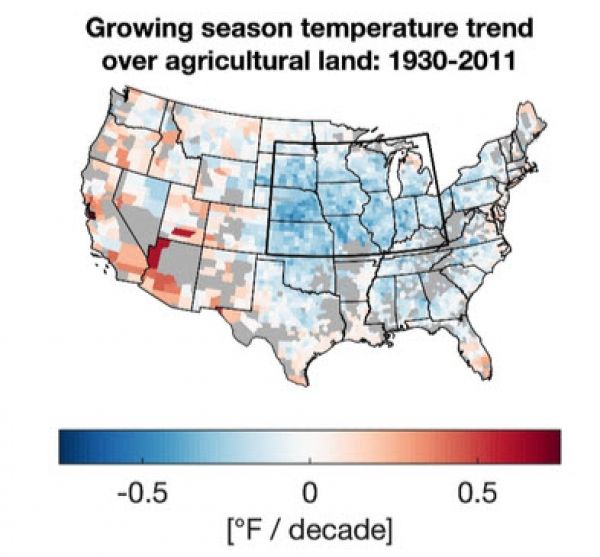The global average temperature has increased 1.4 degrees Fahrenheit over the last 100 years. In contrast, the Corn Belt of the U.S., one of the most agriculturally productive regions of the world, has experienced a decrease in temperatures in the summer during the growing season. Known as the “U.S. warming hole,” this anomalous cooling phenomenon, which occurred in tandem with increasing rainfall, was responsible for boosting corn yields by 5 to 10 percent per year, according to a Dartmouth-led study published in Environmental Research Letters. The study is one of the first to investigate the impacts of the warming hole on agriculture.
Most of the increases in corn yield over the 20th century have resulted from advancements in crop genetics, increased fertilizer application and improved agricultural practices. “If however, the U.S. warming hole had not existed, corn yields for the average county in the central U.S. would have been approximately 10 percent lower per year,” explained lead author Trevor F. Partridge, a graduate student in the department of earth sciences at Dartmouth. “This benefit of a 10 percent higher corn yield translates to roughly $1.5 billion per year in additional value. Our results underscore how the central U.S. has been relatively sheltered from the impacts of climate change,” he added. ($1.5 billion calculation uses historical market value data from Iowa State University Extension and Outreach and U.S. corn production data from the U.S. Department of Agriculture).
To examine the relationship between corn yields and climate, the researchers used over 70 years of historical climate and yield data, machine learning algorithms, and biophysical crop models to simulate corn yields under multiple climate scenarios. The scenarios included historical climate with the warming hole, where temperatures dropped in the late-1950s and rainfall increased, and a counterfactual climate scenario where temperature and rainfall changes associated with the warming hole were removed.
Continue reading at Dartmouth University
Image via Dartmouth University


